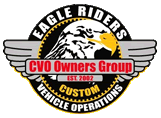I'm certainly no bench racer, though I guess I'm guilty of arguing with one...
I think you've made MY point.
A bit less than you've made mine!
Maxmized engine performance is not only about WOT. If a tuner is only optimizing a bike at WOT then he's ripping you off. I always get a cruise dyno graph at 3000 rpms and have posted them before. Go look them up if you're interested. It will tell you if you're afr is set to balance both performance and fuel economy and generally should be leaner in both cylinders than the afr at WOT.
Thanks, but no thanks. Not interested. Regarding the first sentence, however, we're in complete agreement. Or didn't you read what I wrote yesterday?
Secondly, in the quote above there's only one sentence that matters "As long as the inertial dyno's numbers were repeatable, the critical question (did a particular modification make the engine accelerate faster or slower?) would be answered correctly."
And that is the point of DJ's dyno products. ... It is not trying to compare the "actual" hp to any other device other than one that can rotate [n.b. "accelerate"] it's drum. So its measurement of hp and tq is NOT comparable to a rocket engine or a rototiller but only to other motorcycles or devices that can properly rotate it's dyno drum. Get it?
It's not measuring torque and horsepower, it's inferring them. Actually, inferring the torque and deriving the hp from that, well, maybe the other way around, I forget. But other than that, yes, I get it. I'd thought you'd be able to discern that from what I'd said yesterday.
So a dyno allows the user to make adjustments to efi engine parameters like AFR, fuel mixture and spark advance. And then compare to previous settings to see if the performance against the standard is the same, higher or lower. It also can then compare results from 1 dyno to another assuming they are calibrated [n.b. and operated] consistently. And by using SAE, the theory is that the "math" will standardize key variables in a dyno run like humidity, barometric temp and ambient temp and therefore make those SAE results comparable between different runs on different days and even between 2 calibrated dynos.
Basically quoting me yesterday to me today? Fleshed out a little, obviously, but other than that it's what
I plainly said.
You can certainly challenge whether a particular dyno is set to DJ's calibration standards and you can even challenge whether the formulas behind SAE can reasonably standardize measurement from one dyno run to another regardless of external variables, but suggesting that dyno results are meaningless is clearly a statement from someone that doesn't understand the purpose of building and then tuning a bike for maximizing performance. (BTW aren't you the guy that doesn't even own a bike? My apologies if you own a bike but if you don't, then I "really" understand why you are confused!)
I underlined your misunderstanding of what I'd said. I didn't say the results are meaningless. Quite the opposite. What I'd said was the numbers aren't accurate. They're
relative on any given dyno (when everything's done correctly and consistently) but they're not real. It's like the "AFR" trace values. Unless the bike is being run on some sort of laboratory test-grade fuel, you're not likely to find gasoline that burns at an AFR of 14:6:1, though that's the figure hard-coded into the AFR probes to indicate the fuel has been burned at stoichiometric mixture. You can set up to run stoich with pure ethanol at 9:1 and the probe will indicate this condition as 14.6:1. Sure, you can (usually) rely on the numbers being relative when you make adjustments to the engine, but to say you've set it up to run, say, 13.8:1 AFR is not correct. If you'd said instead "0.9452 lambda" you'd be saying something worth saying.
Aren't I the guy who doesn't even own a bike? See? You're thinking I'm someone else, as I suggested yesterday.
In the end Lever's bike appears to be maximizing the performance of the $ he spent to build his engine. And that conclusion can be reached by:
- the measurements achieved on the dyno while tuning his bike
- the comparison of his measurements to all other bikes that have been run on a calibrated dyno
- the measurements as compared to bike's with a similar build such as mine so long as the dyno was calibrated and we're comparing SAE metrics
- and finally and most importantly the smile on Lever's face when he accelerates from a light and kicks a** when running against 99% of all other Harleys on the road
I'll grant you items 1, and possibly 4, with caveats. But for items 2 and 3, I cannot agree. They're too vague. You left out way too many variables such as what gear the bike was in, tire pressure, was the operator sitting on or standing next to the bike, etc. If the same operator runs two bikes in exactly the same manner on the same machine, then you can use the dyno to accurately compare them. But the true value in a dyno, as we've both said now, is to compare changes to the same bike.
And exactly how did you conclude that "I have it set up instead to be spot-on in all the places I actually use it."?
Do you understand how closed-loop EFI works and how to adjust the ECM so that it's making little to no change to its calculations as a result of the feedback it's gathering? If so, then you should be able to understand how I did it.
Thank you for your time and consideration. I apologize to everyone else for the diversion.
Congrats Lever!
 Author
Topic: Lever's upgrade (Read 16417 times)
Author
Topic: Lever's upgrade (Read 16417 times)

